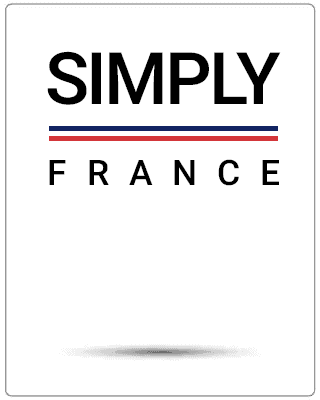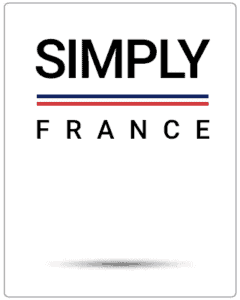Camouflage, invented by the French Army, conceals objects by blending them into their surroundings. Artists developed disruptive patterns during World War I to hide soldiers and equipment. Today, it impacts military tactics, fashion, wildlife adaptation, and more.
In this article, we will explore the history of camouflage, its evolution over time, and its modern-day uses. We will also discuss the impact that camouflage has had on military tactics and strategy.
What is Camouflage?
Camouflage is a versatile technique used to conceal objects or individuals by altering their appearance to blend harmoniously with their surroundings. It involves manipulating color, pattern, texture, and shape to disrupt the visual perception of observers and make the concealed entity difficult to detect. Whether it’s the natural world, military operations, or even fashion, camouflage serves the common purpose of blending in and providing a strategic advantage.
In nature, animals utilize camouflage to protect themselves from predators or to ambush prey. They adapt their coloration and markings to match their environment, effectively disappearing into the background. In military applications, camouflage plays a crucial role in minimizing visibility and enhancing stealth.
It allows soldiers, equipment, and vehicles to blend into the terrain, making them harder to detect and increasing their chances of survival. Additionally, camouflage finds its place in fashion, with patterns inspired by nature’s camouflage used in clothing and accessories, both for their aesthetic appeal and their ability to help individuals blend into urban or natural settings. Overall, camouflage is a powerful tool that harnesses the power of visual deception to achieve a range of practical and strategic objectives.
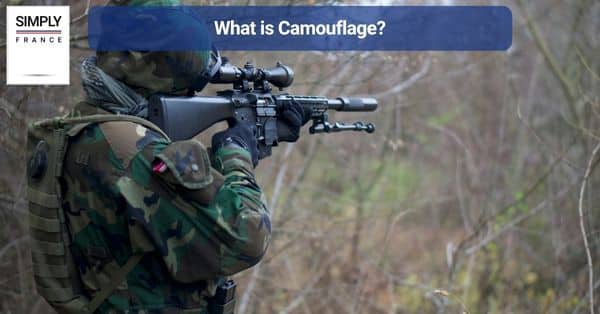
The French Army’s Role in Inventing Camouflage
The French Army played a pivotal role in the invention and development of camouflage techniques. During World War I, faced with the challenges of modern warfare and the need to protect soldiers and equipment, the French Army recognized the importance of concealing their forces. They enlisted the expertise of artists, designers, and scientists to pioneer camouflage as a military strategy.
Notable figures such as Lucien-Victor Guirand de Scévola and Eugene Corbin made significant contributions to camouflage innovation. They experimented with disruptive patterns, color combinations, and materials to create camouflage that would effectively conceal soldiers and military assets on the battlefield. The French Army’s emphasis on camouflage extended beyond personal concealment, with efforts to disguise artillery, vehicles, and even buildings.
Their advancements in camouflage techniques not only influenced military operations during World War I but also laid the foundation for subsequent developments in camouflage across nations and over time. The French Army’s ingenuity and commitment to concealment have left a lasting legacy in the field of camouflage.
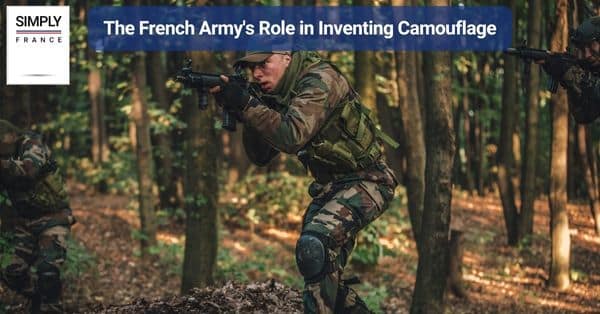
How Camouflage Has Evolved Over Time
Camouflage, the art of blending in with one’s surroundings, has become increasingly important in modern warfare. The practice, however, is far from a recent invention. Soldiers have been disguising themselves since ancient times, using everything from animal hides to tree bark to conceal their presence. In this post, we’ll explore the history of camouflage and how it has evolved over time.
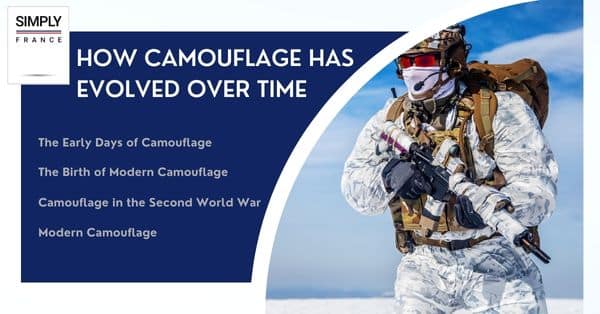
The Early Days of Camouflage
In the early days of warfare, camouflage was often as simple as donning clothing that matched the natural colors of the surrounding terrain. For example, during the American Revolutionary War, soldiers on both sides would often “go Indian,” wearing fringed buckskin coats and moccasins similar to those worn by Native American warriors. This allowed them to move more easily through the forested landscapes of the eastern United States.
The Birth of Modern Camouflage
The birth of modern camouflage can be traced back to the First World War. In 1915, the French army introduced a new kind of uniform designed to help soldiers blend in with their environment. The uniform featured a blue-gray color scheme with splotches of green and brown, inspired by the cubist paintings of Pablo Picasso and Georges Braque. The design was an immediate success, and soon other countries began experimenting with their own camouflage patterns.
Camouflage in the Second World War
During the Second World War, camouflage continued to evolve as military technology advanced. One of the most famous innovations was the “Dazzle” camouflage used by the British Navy. Dazzle involved painting ships with bold geometric patterns that made them difficult to track and target from a distance. On the ground, soldiers were issued uniforms with a variety of patterns, including the iconic tiger stripe pattern worn by American troops in Vietnam.
Modern Camouflage
Today, camouflage continues to be an essential part of military strategy, with each branch of the armed forces developing its own unique patterns and designs. In addition, the technology behind camouflage has advanced significantly in recent years. The U.S. military, for example, is experimenting with “adaptive” camouflage that can change its color and pattern to match the surrounding environment in real-time.
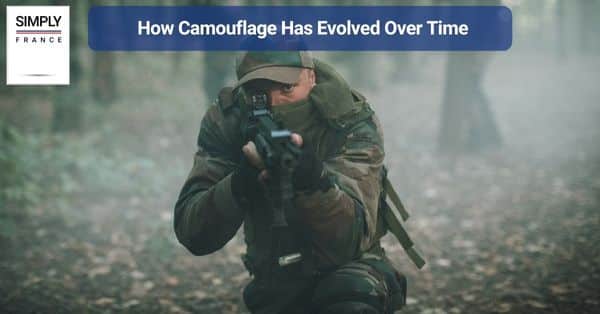
Modern-Day Uses of Camouflage
In modern times, camouflage continues to find diverse applications beyond the military. One prominent use of camouflage is in wildlife conservation and research. Researchers employ camouflage techniques to observe and study animals in their natural habitats without causing a disturbance.
This enables scientists to gather valuable data on behavior, population dynamics, and ecological interactions. Additionally, camouflage is employed in hunting and wildlife photography, allowing hunters and photographers to blend in with their surroundings, increasing their chances of success and capturing elusive shots.
Furthermore, camouflage has made its way into fashion and everyday apparel. Camouflage patterns have become popular in streetwear and outdoor clothing, serving both as a style statement and a nod to the functionality of camouflage.
Outdoor enthusiasts and adventurers often opt for camouflage attire during activities such as hiking, camping, and hunting, as it helps them blend into the environment and maintain a low profile. The versatility of camouflage patterns and their aesthetic appeal has made them a prominent choice in fashion, showcasing the enduring influence of camouflage beyond its military origins.
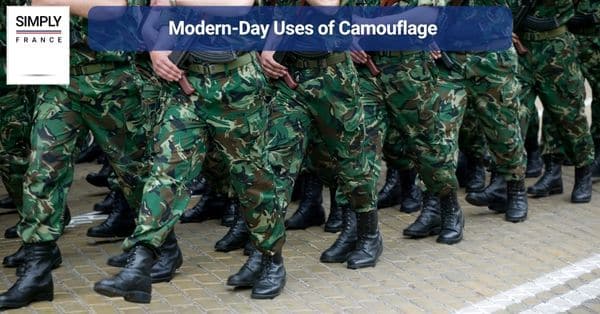
The Impact of Camouflage on Military Tactics and Strategy
Camouflage has been an important tool in military tactics and strategy since the French Army first invented it during World War I. Over the years, camouflage has evolved into a sophisticated system that not only helps soldiers blend into their surroundings but can also deceive and confuse enemy forces.

Evolution of Camouflage
Camouflage was first used by the French Army in 1915 as a way to conceal troops and equipment from the enemy. The early designs were simple and consisted of various shades of brown and green painted onto uniforms and equipment. As the war progressed, the designs became more complex, incorporating patterns that mimicked natural environments such as forests, fields, and even snow-covered landscapes.
During World War II, camouflage technology advanced further with the use of new materials and techniques. Soldiers began using nets, foliage, and other natural materials to create three-dimensional camouflaged positions that were difficult to detect from the air. Camouflage uniforms also became more effective, incorporating disruptive patterns that broke up the human silhouette and made it harder for enemy snipers to target soldiers.
Tactical Advantages of Camouflage
Camouflage provides several tactical advantages on the battlefield. Firstly, it allows soldiers to blend into their environment and avoid detection by the enemy. This is particularly important for reconnaissance missions or when advancing on enemy positions.
Secondly, camouflage can be used to deceive and confuse the enemy. For example, soldiers might use decoys to draw enemy fire away from their actual position. Thirdly, camouflage can be used to protect soldiers from aerial attacks by making it difficult for enemy planes to spot ground targets.
Importance of Camouflage in Modern Warfare
Camouflage remains an important tool in modern warfare. Advances in technology have led to the development of new materials and techniques for creating camouflaged positions and uniforms. Modern warfare often involves asymmetric conflicts where small groups of soldiers are fighting against larger and better-equipped forces. In these situations, camouflage can be used to level the playing field by allowing smaller groups of soldiers to avoid detection and surprise their opponents.

In conclusion
Camouflage has had a long and fascinating history. From its invention by the French Army during World War I to its modern-day applications in fashion and wildlife conservation, camouflage has become an essential tool for concealing objects or individuals. Its versatility has allowed it to be employed in tactical and strategic operations as well as civilian activities such as hunting and photography.
Camouflage’s impact on military tactics and strategy is so profound that it continues to be an important tool in modern warfare. As technology advances, we can expect camouflage to continue evolving and finding new applications in the years ahead.

